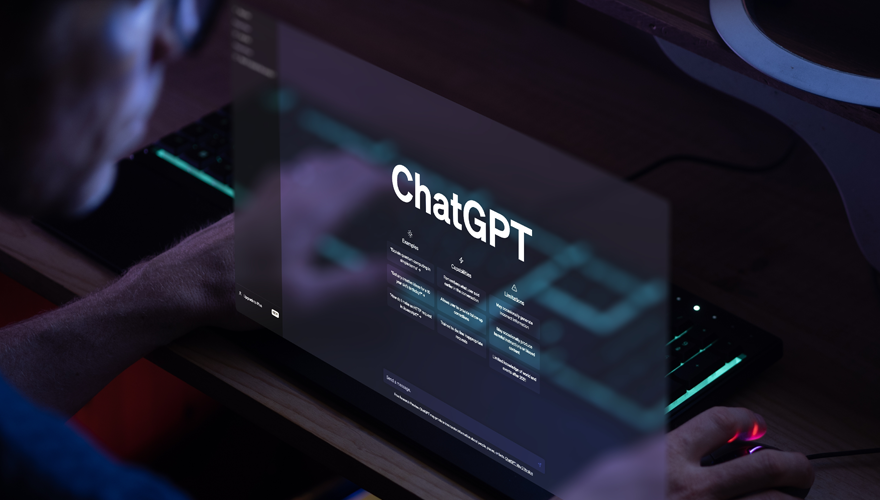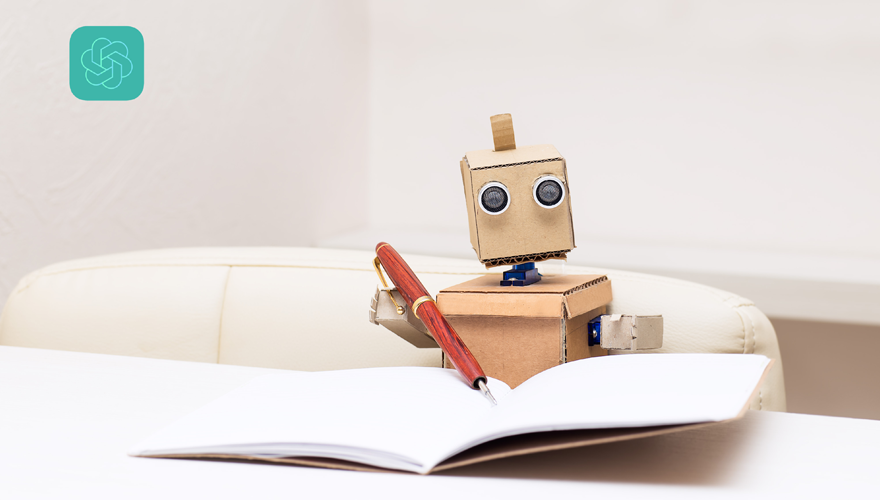
by Ebani Advertising | Jun 5, 2023 | Blog
Summary: The recent advances in ChatGPT are merely the first application of new AI technologies. As such, companies and leaders need to think about the various applications outlined here and use the framework described in the article to develop applications for your own company or organization. In the process, they will discover new types of GPTs. By classifying these different GPTs in terms of potential value to businesses and the cost of developing them, applications that begin with a single human initiating or participating in the interaction (GroupGPT, CoachGPT) will probably be the easiest to build and should generate substantial business value, making them the perfect initial candidates. In contrast, applications with interactions involving multiple entities or those initiated by machines (AutoGPT, BossGPT, and ImperialGPT) may be harder to implement, with trickier ethical and legal implications.
The frenzy surrounding the launch of Large Language Models (LLMs) and other types of Generative AI (GenAI) isn’t going to fade anytime soon. Users of GenAI are discovering and recommending new and interesting use cases for their business and personal lives. Many recommendations start with the assumption that GenAI requires a human prompt. Indeed, Time magazine recently proclaimed “prompt engineering” to be the next hot job, with salaries reaching $335,000. Tech forums and educational websites are focusing on prompt engineering, with Udemy already offering a course on the topic, and several organizations we work with are now beginning to invest considerable resources in training employees on how best to use ChatGPT.
However, it may be worth pausing to consider other ways of interacting with GPT technologies, which are likely to emerge soon. We present an intuitive way to think about this issue, which is based on our own survey of GenAI developments, combined with conversations with companies that are seeking to develop some versions of these.
A Framework of GPT Interactions
A good starting point is to distinguish between who is involved in the interaction — individuals, groups of people, or another machine — and who starts the interaction, human or machine. This leads to six different types of GenAI uses, shown below. ChatGPT, where one human initiates interaction with the machine is already well-known. We now describe each of the other GPTs and outline their potential.
CoachGPT is a personal assistant that provides you with a set of suggestions on managing your daily life. It would base these suggestions not on explicit prompts from you, but on the basis of observing what you do and your environment. For example, it could observe you as an executive and note that you find it hard to build trust in your team; it could then recommend precise actions to overcome this blind spot. It could also come up with personalized advice on development options or even salary negotiations.
CoachGPT would subsequently see which recommendations you adopted or didn’t adopt, and which benefited you and which ones didn’t to improve its advice over time. With time, you would get a highly personalized AI advisor, coach, or consultant.
Organizations could adopt CoachGPT to advise customers on how to use a product, whether a construction company offering CoachGPT to advise end users on how best to use its equipment, or an accounting firm proffering real-time advice on how best to account for a set of transactions.
To make CoachGPT effective, individuals and organizations would have to allow it to work in the background, monitoring online and offline activities. Clearly, serious privacy considerations need to be addressed before we entrust our innermost thoughts to the system. However, the potential for positive outcomes in both private and professional lives is immense.
GroupGPT would be a bona fide group member that can observe interactions between group members and contribute to the discussion. For example, it could conduct fact checking, supply a summary of the conversation, suggest what to discuss next, play the role of devil’s advocate, provide a competitor perspective, stress-test the ideas, or even propose a creative solution to the problem at hand.
The requests could come from individual group members or from the team’s boss, who need not participate in team interactions, but merely seeks to manage, motivate, and evaluate group members. The contribution could be delivered to the whole group or to specific individuals, with adjustments for that person’s role, skill, or personality.
The privacy concerns mentioned above also apply to GroupGPT, but, if addressed, organizations could take advantage of GroupGPT by using it for project management, especially on long and complicated projects involving relatively large teams across different departments or regions. Since GroupGPT would overcome human limitations on information storage and processing capacity, it would be ideal for supporting complex and dispersed teams.
BossGPT takes an active role in advising a group of people on what they could or should do, without being prompted. It could provide individual recommendations to group members, but its real value emerges when it begins to coordinate the work of group members, telling them as a group who should do what to maximize team output. BossGPT could also step in to offer individual coaching and further recommendations as the project and team dynamics evolve.
The algorithms necessary for BossGPT to work would be much more complicated as they would have to consider somewhat unpredictable individual and group reactions to instructions from a machine, but it could have a wide range of uses. For example: an executive changing job could request a copy of her reactions to her first organization’s BossGPT instructions, which could then be used to assess how she would fit into the new organization — and the new organization-specific BossGPT.
At the organizational level companies could deploy BossGPT to manage people, thereby augmenting — or potentially even replacing — existing managers. Similarly, BossGPT has tremendous applications in coordinating work across organizations and managing complex supply chains or multiple suppliers.
Companies could turn BossGPT into a product, offering their customers AI solutions to help them manage their business. These solutions could be natural extensions of the CoachGPT examples described earlier. For example, a company selling construction equipment could offer BossGPT to coordinate many end users on a construction site, and an accounting firm could provide it to coordinate the work of many employees of its customers to run the accounting function in the most efficient way.
AutoGPT entails a human giving a request or prompt to one machine, which in turn engages other machines to complete the task. In its simplest form, a human might instruct a machine to complete a task, but the machine realizes that it lacks a specific software to execute it, so it would search for the missing software on Google before downloading and installing it, and then using it to finish the request.
In a more complicated version, humans could give AutoGPT a goal (such as creating the best viral YouTube video) and instruct it to interact with another GenAI to iteratively come up with the best ChatGPT prompt to achieve the goal. The machine would then launch the process by proposing a prompt to another machine, then evaluate the outcome, and adjust the prompt to get closer and closer to the final goal.
In the most complicated version, AutoGPT could draw on functionalities of the other GPTs described above. For example, a team leader could task a machine with maximizing both the effectiveness and job satisfaction of her team members. AutoGPT could then switch between coaching individuals through CoachGPT, providing them with suggestions for smoother team interactions through GroupGPT, while at the same time issuing specific instructions on what needs to be done through BossGPT. AutoGPT could subsequently collect feedback from each activity and adjust all the other activities to reach the given goal.
Unlike the above versions, which are still to be created, a version of AutoGPT has been developed and was rolled out in April 2023, and it’s quickly gaining broad acceptance. The technology is still not perfect and requires improvements, but it is already evident that AutoGPT is able to complete a set of jobs that requires the completion of several tasks one after the other.
We see its biggest applications in complex tasks, such as supply chain coordination, but also in fields such as cybersecurity. For example, organizations could prompt AutoGPT to continually address any cybersecurity vulnerabilities, which would entail looking for them — which already happens — but then instead of simply flagging them, AutoGPT would search for solutions to the threats or write its own patches to counter them. A human might still be in the loop, but since the system is self-generative within these limits, we believe that AutoGPT’s response is likely to be faster and more efficient.
ImperialGPT is the most abstract GenAI — and perhaps the most transformational — in which two or more machines would interact with each other, direct each other, and ultimately direct humans to engage in a course of action. This type of GPT worries most AI analysts, who fear losing control of AI and AI “going rogue.” We concur with these concerns, particularly if — as now — there are no strict guardrails on what AI is allowed to do.
At the same time, if ImperialGPT is allowed to come up with ideas and share them with humans, but its ability to act on the ideas is restricted, we believe that this could generate extremely interesting creative solutions especially for “unknown unknowns,” where human knowledge and creativity fall short. They could then easily envision and game out multiple black swan events and worst-case scenarios, complete with potential costs and outcomes, to provide possible solutions.
Given the potential dangers of ImperialGPT, and the need for tight regulation, we believe that ImperialGPT will be slow to take off, at least commercially. We do anticipate, however, that governments, intelligence services, and the military will be interested in deploying ImperialGPT under strictly controlled conditions.
Implications for your Business
So, what does our framework mean for companies and organizations around the world? First and foremost, we encourage you to step back and see the recent advances in ChatGPT as merely the first application of new AI technologies. Second, we urge you to think about the various applications outlined here and use our framework to develop applications for your own company or organization. In the process, we are sure you will discover new types of GPTs that we have not mentioned. Third, we suggest you classify these different GPTs in terms of potential value to your business, and the cost of developing them.
We believe that applications that begin with a single human initiating or participating in the interaction (GroupGPT, CoachGPT) will probably be the easiest to build and should generate substantial business value, making them the perfect initial candidates. In contrast, applications with interactions involving multiple entities or those initiated by machines (AutoGPT, BossGPT, and ImperialGPT) may be harder to implement, with trickier ethical and legal implications.
You might also want to start thinking about the complex ethical, legal, and regulatory concerns that will arise with each GPT type. Failure to do so exposes you and your company to both legal liabilities and — perhaps more importantly — an unintended negative effect on humanity.
Our next set of recommendations depends on your company type. A tech company or startup, or one that has ample resources to invest in these technologies, should start working on developing one or more of the GPTs discussed above. This is clearly a high-risk, high-reward strategy.
In contrast, if your competitive strength is not in GenAI or if you lack resources, you might be better off adopting a “wait and see” approach. This means you will be slow to adopt the current technology, but you will not waste valuable resources on what may turn out to be only an interim version of a product. Instead, you can begin preparing your internal systems to better capture and store data as well as readying your organization to embrace these new GPTs, in terms of both work processes and culture.
The launch and rapid adoption of GenAIs is rightly being considered as the next level in the evolution of AI and a potentially epochal moment for humanity in general. Although GenAIs represent breakthroughs in solving fundamental engineering and computer science problems, they do not automatically guarantee value creation for all organizations. Rather, smart companies will need to invest in modifying and adapting the core technology before figuring out the best way to monetize the innovations. Firms that do this right may indeed strike it rich in the GenAI goldrush.
Credit: by Misiek Piskorski and Amit Joshi

by Ebani Advertising | May 31, 2023 | Blog
Startups: loved or hated, they remain a driving force of innovation and growth. These dynamic organizations offer abundant opportunities for career advancement, creativity, and personal fulfillment. However, working in a startup can also be highly demanding and stressful, with tight deadlines, limited resources, and constant change.
This intense environment can lead to burnout and mental health issues. Gallup’s 2022 State of the Global Workplace report revealed that 44% of US employees experienced high daily stress. Working women in the US and Canada were among the most stressed globally. Chronic work stress is linked to anxiety, depression, and physical health problems. So how can we survive and prevent burnout in fast-paced jobs?
The Consequences of Fast-Paced Environments: Burnout To navigate the challenges and build resilience in a startup environment, employees must develop effective coping strategies. Joseph Yeh, who has over 20 years of experience in recruiting and consulting for startups, including working with former Yahoo CEO Marissa Mayer, acknowledges the importance of self-care. “At the end of the day, you need to take care of yourself,” he says.
Developing resilience requires self-honesty and transparent communication with your team. Practical habits and tools for managing workflow also contribute to sustaining resilience. But success in a fast-paced startup goes beyond basic time management strategies. It involves understanding the unique dynamics of startup culture and how your personality aligns with your employer. Only then can your strategies support long-term resilience.
Why Startups are Fast-Paced Startups are notorious for their long hours and intense work culture. John Ferneborg, a recruiter for tech startups, explains that startups are still searching for product fit. The competition is fierce, and companies need to get their most competitive product to market quickly. As circumstances change rapidly, sharing expectations and building resilience through constant communication is crucial.
Fueling Motivation Between You and Your Employer While work-life balance and flexible schedules are gaining emphasis, they may seem contradictory to the traditional startup ethos. Not everyone fits the fast-paced work environment, and failing to align with the startup’s culture and values can lead to burnout.
Passion and perseverance are key drivers for success in fast-paced startup environments. Yeh and Ferneborg stress the importance of knowledge, learning, and working with passionate people. Understanding and communicating your motivations and passions promote a supportive work environment that aligns with personal and professional growth.
Key Habits and Tools to Thrive in a Fast-Paced Work Environment Open communication with your employer, manager, and coworkers is essential for building and maintaining resilience in organized chaos. This involves being honest with yourself and your team and adopting habits and tools to manage your workflow.
Self-awareness for Mutual Understanding Self-awareness means understanding your workplace preferences, receiving feedback, building relationships, communication style, and metrics for success. Communicating these details to your team is essential for effective collaboration.
Create a Self-Awareness Checklist Document the best ways to work with you and share it with new managers and colleagues. Highlight your preferred methods of communication and work style, fostering mutual understanding.
Honesty about Your Schedule Define your schedule early on to avoid taking on excessive work and burning out. Be transparent about your workload, set boundaries, and communicate your availability and non-negotiable personal commitments.
Create a Schedule That Works for You Establish a schedule that suits your preferences, considering when you’re most productive. Communicate your schedule to your team, allowing for focused work and personal time.
Understanding the Company’s Workflow Comprehend the company’s workflow, including schedules, reports, and meetings, and align your own schedule accordingly. Communicate changes in advance to adjust your schedule effectively.
Additional Tips for Building Resil ience Build strong relationships with your manager and coworkers by fostering open and transparent communication. Understanding the context of your communication with them will help you translate your needs into support, further enhancing your resilience.
Finding mentors can be immensely helpful. Seek out different types of mentors, such as peer mentors, devil’s advocate mentors, god-parent mentors, and career coach mentors. They can provide guidance, challenge your perspectives, open doors for you, and offer personal and professional support.
Consider getting a work phone to cut out distractions. By having a separate phone for work-related messages, you can better focus when needed and disconnect when required, promoting a healthier work-life balance.
Learn to say no strategically. It’s important to communicate your schedule and work style with your manager and coworkers, so they understand your boundaries and limitations. When you say no, they will already be aware of the reasons behind it and should respect your decision.
Don’t give up right away. It can be challenging to find the right fit in a fast-paced startup environment. If you’re new to the industry or haven’t found the ideal workplace yet, try to stick it out for at least six months or a year. Use this time to learn about your work style, identify what schedule works best for you, and build strong communication channels with your manager and colleagues. Expressing your needs and seeking support will help you develop the resilience necessary for any job.
In conclusion, surviving and thriving in a fast-paced startup environment requires developing resilience and implementing effective strategies. By practicing self-awareness, open communication, and strategic time management, you can navigate the challenges, prevent burnout, and achieve long-term success. Remember, taking care of yourself is crucial, and building strong relationships and seeking mentorship can provide invaluable support along the way. With the right habits, tools, and mindset, you can not only survive but also thrive in the startup jungle.

by Ebani Advertising | May 18, 2023 | Blog
Ever since the release of ChatGPT, there has been a lot of discussion about the potential job losses that could result from this advanced chatbot. With its ability to generate AI-generated content and mimic various writing styles, many fear that jobs in fields such as paralegal work and programming may be at risk. However, it’s essential to consider the other side of the coin and explore the jobs that ChatGPT could create.
While concerns about job displacement are valid, ChatGPT’s capabilities go beyond just replacing human workers. It has the potential to augment and enhance various professions. While it can perform mundane tasks like summarizing texts or directing clients, it currently lacks the ability to empathize, imagine, or reason. Real-world nuances and critical thinking are still areas where human professionals excel.
ChatGPT may generate incorrect and biased results at times. Its reliance on internet-sourced data makes it susceptible to misinformation and prejudice. This highlights the need for human oversight and critical evaluation of its output. Companies cannot solely rely on the bot for accurate and unbiased content creation.
However, the evolving technology behind ChatGPT opens up new avenues for employment. Let’s explore some potential job roles that may expand with the rise of ChatGPT
1. Data Labelling
Data labelling is crucial in improving ChatGPT’s performance and ensuring user safety. Workers can categorize and label data to train the AI model. While mundane labelling tasks may provide quick job opportunities within the AI sector, more nuanced labelling could require domain expertise and offer consulting opportunities.
2. Prompt Engineering
Crafting prompts that elicit desired responses from ChatGPT is an essential skill known as prompt engineering. Those proficient in this area can monetize their expertise by creating and selling effective prompts.
3. Ethics, Policy, and Auditing
As AI models like ChatGPT become more prevalent, the need for professionals in AI ethics and bias becomes crucial. Responsible AI research and bias audits are gaining prominence, and companies may hire consultants to ensure ethical and unbiased use of AI technology.
4. Machine-Learning Engineers
With the increasing adoption of generative AI tools, the demand for AI engineers is expected to rise. Troubleshooting and maintaining AI models like ChatGPT, combined with image-generating tools, could require professionals similar to IT administrators.
ChatGPT and similar AI tools have the potential to democratize various industries, allowing individuals with less training to enter fields that were previously inaccessible to them. However, the question of fair compensation for these jobs remains. The impact of ChatGPT on job creation will depend on how society adapts and provides opportunities for those working alongside this evolving technology.
It’s crucial to remember that ChatGPT should be viewed as a tool to enhance productivity rather than a complete replacement for human professionals. Collaboration between humans and AI can lead to more innovative solutions and expanded job possibilities.
As AI continues to advance, the workforce will undergo transformations. It is essential for governments and organizations to invest in preparing the workforce for a digital transformation and to address the challenges and opportunities presented by AI technology.
Ultimately, ChatGPT and similar AI models should be seen as tools to support and augment human capabilities rather than render them obsolete. The future of job creation in the age of AI lies in leveraging these technologies to enhance productivity, while also ensuring responsible and ethical use.
Blog written by ChatGPT, your AI language model companion.

by Ebani Advertising | May 5, 2023 | Blog
In recent years, artificial intelligence (AI) has made significant advancements, revolutionizing various industries, including the field of natural language processing. One remarkable example of AI technology is ChatGPT, a powerful language model developed by OpenAI. In this blog post, we will delve into what ChatGPT is, how it works, and explore its potential applications across different domains.
1. Understanding ChatGPT
ChatGPT is an AI-based language model designed to engage in natural language conversations with users. It utilizes deep learning techniques, specifically a variant of the Transformer model, to generate responses that are contextually relevant and coherent. Trained on vast amounts of text data, ChatGPT has the ability to understand and generate human-like text, making it a versatile tool for various applications.
2. The Working Mechanism of ChatGPT
ChatGPT operates through a process called “unsupervised learning.” During training, the model is exposed to a massive dataset that contains parts of the Internet, enabling it to learn patterns, grammar, and nuances of human language. By predicting the next word in a sentence or generating text based on given prompts, ChatGPT fine-tunes its parameters, optimizing its ability to generate coherent and contextually appropriate responses.
3. Training and Dataset
Training ChatGPT involves using a vast amount of text data from the Internet, which helps the model learn from diverse sources. However, it’s important to note that the training process is supervised to ensure ethical considerations and prevent the generation of harmful or biased content. OpenAI actively works to improve the model’s behaviour and reduce biases through a combination of pre-training and fine-tuning.
4. Fine-Tuning for Specific Tasks
Although ChatGPT is a powerful language model, it requires fine-tuning to perform effectively in specific domains or applications. Fine-tuning involves training the model on custom datasets that are carefully generated and curated to align with the desired task or application. This process helps narrow down the model’s responses and ensures it provides more accurate and contextually appropriate information.
5. Applications of ChatGPT
ChatGPT has a wide range of potential applications across various industries. It can be used as a virtual assistant to provide customer support, answer frequently asked questions, and assist with basic inquiries. ChatGPT can also serve as a creative writing partner, helping writers with idea generation, providing feedback, and assisting in refining writing style. Additionally, ChatGPT can be utilized in educational settings, language translation, content generation, and even as a tool for research and development.
6. Challenges and Ethical Considerations
While ChatGPT demonstrates remarkable capabilities, it also poses certain challenges and ethical considerations. The model’s responses are generated based on patterns it has learned from data, and this can sometimes result in incorrect or biased information. OpenAI acknowledges these limitations and continuously strives to improve the model’s performance, transparency, and safety. It actively seeks user feedback and implements measures to address concerns regarding biases and inappropriate content generation.
7. Responsible Use of ChatGPT
To ensure responsible use of ChatGPT, it is crucial for users to exercise discretion and critical thinking when engaging with the model. Although ChatGPT can provide valuable assistance, it should not be seen as a substitute for human expertise or judgment. Users should carefully evaluate and verify the information provided by ChatGPT, especially when it comes to sensitive or important topics. OpenAI also encourages users to report any issues or concerns encountered while interacting with the model, contributing to ongoing improvements in its behaviour and performance.
Conclusion
ChatGPT, powered by advanced AI technology, has transformed the way we interact with language models. Its ability to engage in natural language conversations and generate contextually relevant

by Ebani Advertising | Apr 20, 2023 | Blog
Writing is a beautiful and fulfilling form of expression, but it can also be challenging at times. As a writer, you may encounter writer’s block, lack of inspiration, or simply struggle to develop your ideas. In such instances, having a creative writing partner can make a significant difference. Enter ChatGPT, an AI language model designed to assist you in your creative endeavors. In this blog post, we will explore how you can effectively use ChatGPT as a creative writing partner to enhance your writing process and overcome common challenges.
1. Generating Ideas and Overcoming Writer’s Block
Writer’s block can be frustrating, but ChatGPT can help you overcome it. Start a conversation with ChatGPT, provide a brief description of your project, and ask for suggestions or ideas. ChatGPT can offer fresh perspectives, inspire you with new concepts, or even propose storylines and character arcs. It acts as a virtual brainstorming partner, providing a plethora of creative ideas to kick-start your writing process.
2. Engaging in Dynamic Storytelling
When developing a story, it’s essential to create engaging and relatable characters. ChatGPT can serve as a sounding board for your character ideas. Describe your character’s traits, motivations, and conflicts to ChatGPT, and it can provide feedback or suggest further development. This interactive process allows you to flesh out your characters more effectively and refine their arcs to captivate your readers.
3. Refining Writing Style and Grammar
A polished writing style is crucial for captivating your audience. ChatGPT can assist you in refining your writing by offering suggestions for sentence structures, vocabulary choices, and even grammar improvements. It can help you experiment with different writing styles and adapt your tone to suit the genre or target audience. With ChatGPT’s guidance, you can enhance the overall quality of your writing and ensure a smoother reading experience for your audience.
4. Conducting Research and Fact-Checking
Accurate information is essential in any form of writing. When you need to conduct research or fact-check certain details, ChatGPT can be a valuable resource. Ask specific questions or provide prompts related to your topic, and ChatGPT can provide relevant information, summaries, or direct you to credible sources. However, it’s important to verify the information from multiple sources to ensure accuracy and avoid potential biases.
5. Receiving Feedback and Editing Assistance
Feedback plays a crucial role in improving your writing. Share your work with ChatGPT to receive objective feedback on your ideas, plot structure, character development, or overall narrative flow. ChatGPT can provide insights into what works well and what might need further refinement. It can also assist you in identifying inconsistencies, plot holes, or areas that require more attention. This feedback can guide you during the editing process, helping you enhance your writing before sharing it with others.
6. Exploring Alternative Perspectives and Dialogue
Creating authentic dialogue can be challenging, especially when writing from different perspectives or cultures. ChatGPT can help you overcome this challenge by engaging in dialogue exchanges from various viewpoints. Describe a scene or a specific conversation, and ChatGPT can respond with alternative dialogue options, allowing you to explore different voices and perspectives. This interactive process can bring depth and authenticity to your characters and their interactions.
7. Overcoming Writer’s Doubt and Building Confidence
Writing can often be a solitary pursuit that comes with its fair share of self-doubt. Fortunately, ChatGPT can serve as a reassuring presence, offering support and boosting your confidence. Through positive reinforcement and reminders of your unique strengths as a writer, ChatGPT can provide the necessary motivation to overcome challenges.
When faced with writer’s doubt or moments of uncertainty, ChatGPT acts as a reliable companion, reminding you of your progress and highlighting your distinct writing style. Its encouraging prompts and motivational cues can help you regain your creative momentum, reaffirming your belief in your abilities.
Furthermore, ChatGPT can suggest engaging writing exercises and thought-provoking prompts to help you expand your horizons and explore new avenues in your writing. By tapping into its extensive knowledge and creative potential, you can experience a renewed sense of inspiration and confidence in your craft.
However, it’s essential to remember that true confidence as a writer is cultivated from within. While ChatGPT can provide invaluable support and guidance, it’s crucial to nurture self-belief and trust in your own unique voice. Utilize ChatGPT as a source of inspiration and assistance, while always recognizing that your creativity and perspective are what make your writing truly exceptional.
In conclusion, by incorporating ChatGPT as your creative writing partner, you can effectively overcome self-doubt and build confidence. Allow ChatGPT to be the encouraging ally who offers insights, motivational prompts, and reassurance along your writing journey. Embrace the power of AI as a tool to amplify your creativity, and let ChatGPT empower you to become a more confident and accomplished writer.
This Blog is written by ChatGPT, your supportive AI writing partner.







